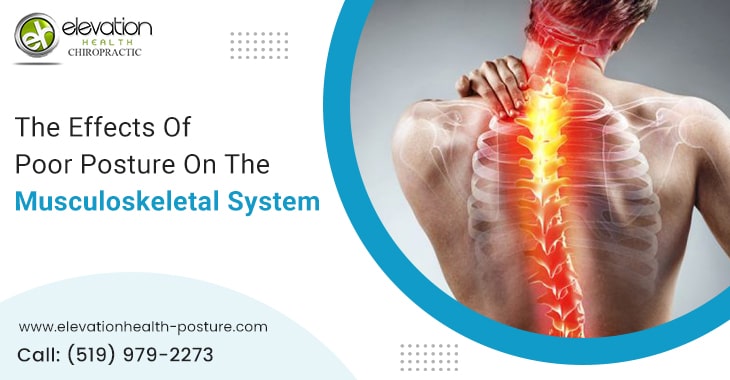Proper posture helps to maintain our overall structure and wellness of the body. Good posture benefits us in numerous ways, and bad posture leads to thousands of health issues. The musculoskeletal system can suffer greatly from poor posture, resulting in several issues and discomfort. So, it’s vital to maintain proper posture. Any reputed chiropractor like Dr Brian Nantais can help you in this regard.
If you seek Chiropractic Care in Canada to fix your postural misalignment, you must consult Dr Brian Nantais from Nantais Family Chiropractic. He is well-versed in providing Chiropractic care and can offer you the best-fit treatment approach. Reach out to Elevation Health for his consultation.
Here are a few striking examples of how bad posture affects various body parts:-
- Shoulders and Neck
- Spine
- Hips and the lower back
- Muscles
- Ligaments and Joints
Shoulders and Neck
The forward head posture that is frequently linked to slouching puts too much strain on the neck and shoulders. The head, which typically weighs between 10 and 12 pounds, moves forward from its optimum position over the spine. This misalignment stresses the neck’s muscles and joints, leading to persistent muscle tension, stiffness, and occasionally headaches. Hunched shoulders result from the tendency for the shoulders to curve forward. This posture causes imbalances and probable shoulder joint instability by tightening the chest muscles while weakening the upper back muscles.
Spine:
The spinal discs are put under too much pressure when slouching or sitting with a rounded back, which may cause disc degeneration and compression over time. Compromising the spine’s natural curves, including lordotic curvature in the lower back is possible. A flat back is caused by the lumbar spine flattening or reversing its curvature due to a pelvic tilt backwards. The development of disorders like kyphosis (excessive forward curvature of the upper back) or scoliosis (sideways curvature of the spine) can also be attributed to poor posture.
Chiropractic care is effective from postural correction to treating and managing scoliosis symptoms. But to get satisfactory results, you need to contact Dr Brian Nantais from Nantais Family Chiropractic at Elevation Health.
Hips and the lower back:
The lumbar region’s muscles and ligaments are strained by slumped sitting or overhanging the lower back. Chronic low back discomfort, muscle imbalances, and decreased core stability can all be consequences of placing too much strain on the lower back. The position and functionality of the hip joints can also be impacted by poor posture. The natural mechanics of the hip joint are interfered with when the pelvis is tilted forward or backwards, which may result in hip pain and a restricted range of motion.
Muscles:
Due to imbalances and compensatory movements, the poor posture frequently makes certain muscles tense and others weak. For instance, the upper back and shoulder blade muscles (rhomboids, trapezius) can weaken while the chest muscles (pectorals) can tighten and shorten. Muscle tension that is out of balance can cause postural abnormalities like rounded shoulders and a forward head and a higher risk of injury.
Ligaments and Joints:
Incorrect and persistent bad posture can strain joints and ligaments, causing pain and raising the risk of joint damage. Ligaments can become overstretched or weakened, which makes joints less stable and more prone to sprains. Ligaments connect bones and give stability. Joint pain, particularly in the knees or ankles, can also result from uneven weight distribution brought on by bad posture.
Concluding Words
It’s vital to note that while these descriptions highlight the potential repercussions of bad posture, not everyone will necessarily suffer the same effects. Nevertheless, preserving excellent posture and adopting ergonomic practices can help lower the risk of these musculoskeletal issues. In this regard, you can consult with any expert chiropractor like Dr Brian Nantais from Nantais Family Chiropractic at Elevation Health in Canada.





Recent Comments